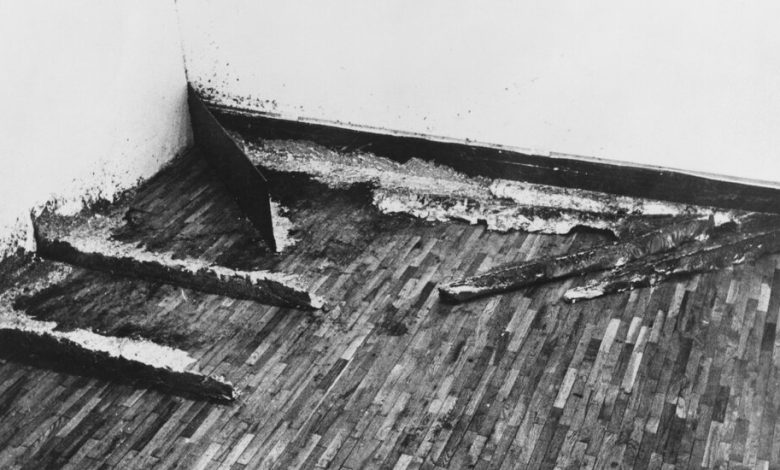Serra’s ‘Splash’: A Public Artist’s Private Breakthough

Although Richard Serra seems destined to be remembered as “the man of steel,” when he died this week, I found myself thinking back to a story he had told me about his younger and more vulnerable self.
In 1969, he received his first commission for a sculpture. The request came from the artist Jasper Johns. Serra considered the event a turning point in his life, and when we spoke about it over the years — first in 1989, when I interviewed him at his house in the wilds of Nova Scotia, Canada — he confirmed a suspicion of mine: Good artists impress the viewing public, while great artists impress their fellow artists.
This story begins on May 19, 1969, when a now-historic group show entitled “Anti-Illusion: Procedures/Materials” opened at the Whitney Museum of American Art, which had just moved into Marcel Breuer’s fortresslike building on Madison Avenue. The 22 artists in the show were then known as Process artists and interested in dismantling the fanatic geometry and high gloss of Minimalist sculpture reigning in New York.
When visitors to the Whitney stepped off the elevator onto the fourth floor, the first work they saw was Serra’s startling “Splash Piece: Casting.” It looked nothing like a traditional sculpture. It had no clear shape or decipherable subject. There was no pedestal beneath it to proclaim its importance. Instead, it lay directly on the floor, a scattering of assorted metal fragments.
Serra had created it by splashing and ladling a pot of molten lead against the base of the wall. The work, however primitive in appearance, alluded slyly to his 20th-century art heroes, specifically the pouring technique of Jackson Pollock. Serra also credited Jasper Johns, who might seem like the opposite of Pollock. Johns’s careful, wax-based brushstrokes suggested that art is not a bid for transcendence, but a series of incremental steps.
Serra, 30 and shaggy haired, had shown his first splash piece a year earlier, in a group show at the Castelli Warehouse, a storage space on West 108th Street. He was disappointed. Only a few people saw the show; those who did, failed to understand it. The critic Philip Leider, a friend of his, mistakenly claimed in a review that the work was made from silver paint. “I called Phil up and said, you are going to be embarrassed by this,” Serra recalled. “It wasn’t silver. It was lead.”




